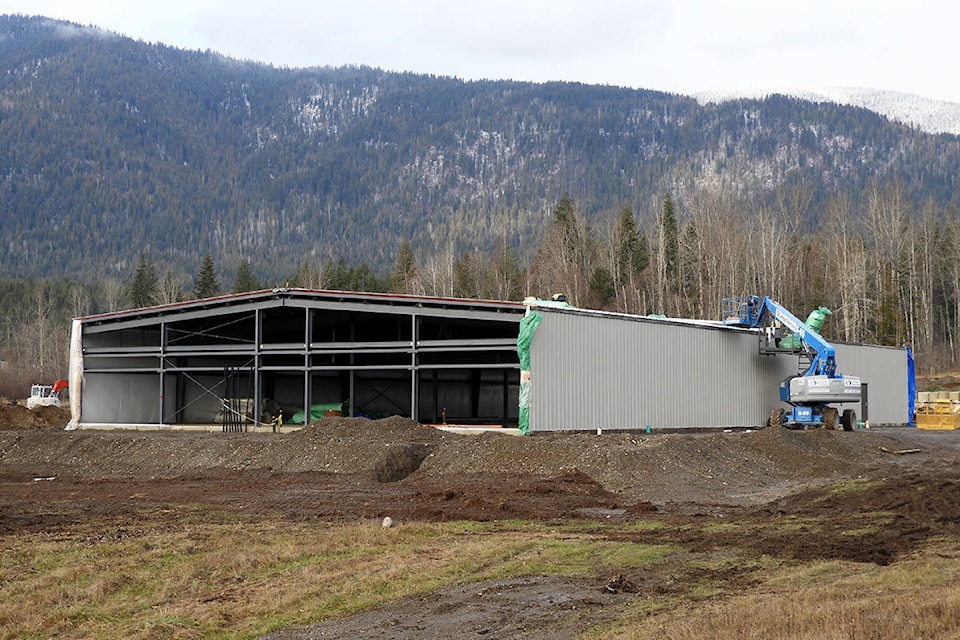Cannabis production has been a fixture in the local economy for nearly four decades, although until recently the benefits were largely underground.
Much like alcohol during prohibition, fortunes were made with some of the money going to create or support local businesses, and hundreds of people made good wages tending plants and clipping buds for the underground market.
Soon there will be three, large-scale facilities in the Shuswap, producing legal cannabis for medicine, pets and recreational use.
During the 1970s, only the weak sativa strain from Mexico was cultivated, with pounds of leaf worth only $100 and sales were limited. In the 1980s, the first crops of stronger indica bud were grown, likely using seeds from Thai sticks. Prices quickly shot up to as high as $3,000 a pound, with some of the harvest exported to the United States. Growers began using a technique called cloning, where clippings taken from mature female plants are propagated into plants for harvest.
Cloning required growing plants indoors through the winter under lights and, beginning in the late 1980s, some growers began to operate year round indoors under controlled conditions. Indoor production resulted in the creation of new, more powerful strains and soon B.C. bud became famous. Outdoor growing persisted until recently and today one can find countless abandoned grow sites in forestry plantations where there are hundreds of feet of plastic pipes and bags filled with pro mix soil.
Related: Okanagan College dives into cannabis
It was the health benefits of marijuana that eventually began to remove the stigma and begin the move towards legalization. Prior to criminalization in 1923, there were some 200 medicinal cannabis products sold in North America, as its ability to treat pain and disease had been likely known for centuries, if not millennia. After medicinal marijuana was legalized in 2001, some local growers obtained licences and were able to market their product, including the highly beneficial cannabidiol (CBD) to dispensaries.
It was standing room only at the Celista Hall on Nov. 17, when representatives from Liht gave a public presentation about their large production facility currently under construction on Garland Road. This will be not be a typical legal grow-op, as it will utilize state-of-the art technology developed by NASA to produce the highest quality medical cannabis. The plants will be organically cultivated in soil and monitored continuously by computers that will assess their status to optimize the growing conditions and prevent problems from pathogens, moulds and mites.
Eventually, there will be 100,000 square feet of semi-automated, indoor growing area in 10 buildings, with low-energy LED lighting. The facility plans to produce its own power from thermal oxidation using wood waste, with the leftover ash converted to carbon and minerals that will be sold. Specialized strains of plants will be fertilized with compost made at the site, using local manure and worms. There will be 100 per cent containment of all emissions, all wastes will be reused and 80 per cent of the water will be recycled. Although there was much applause at the public meeting, some locals voiced concerns about the loss of good farmland, increased traffic and noise, threats to water supply, and reduced property values in their rural neighbourhood.
Related: Kelowna farmer fights cannabis licence bureaucracy
True Leaf, now chaired by former premier Mike Harcourt, is an established company founded in 2013 that currently produces hemp-seed based products for pets. It is in the last stages of building a 16,000 sq. foot facility in Lumby where it plans to cultivate high-quality cannabis for pets, as well as for medicinal and recreational products. Given this unique company has a head start in producing and marketing medicinal products for pets, it has the potential to become a leader in this field once the regulations allow CBD use for dogs and cats.
Close to Falkland, PhyeinMed has repurposed a former cabinetry workshop into a 15,500 sq. foot cannabis production facility where it plans to eventually produce 4,000 kg of high-grade bud for sale in government-run stores. Plants will begin cultivation indoors and then be moved to outdoor greenhouses. The company, which partners with Heritage Cannabis Holdings, received its licence in July after years of navigating the intensive process.
Legal cannabis production will soon be part of the ever-changing local economy that has transitioned from primarily forestry based to a diversity of sectors, including tourism, construction, manufacturing and various services.
The 80 to 100 jobs in the North Shuswap, 20 jobs in Falkland and 18 jobs in Lumby will be well appreciated; however, employment in these legal operations will never match the many hundreds of people that were once employed in the underground cannabis industry during the heydays of the 1980s and 1990s, when a clipper could earn upwards of $60 an hour.
General tag
@SalmonArm
newsroom@saobserver.net
Like us on Facebook and follow us on Twitter
